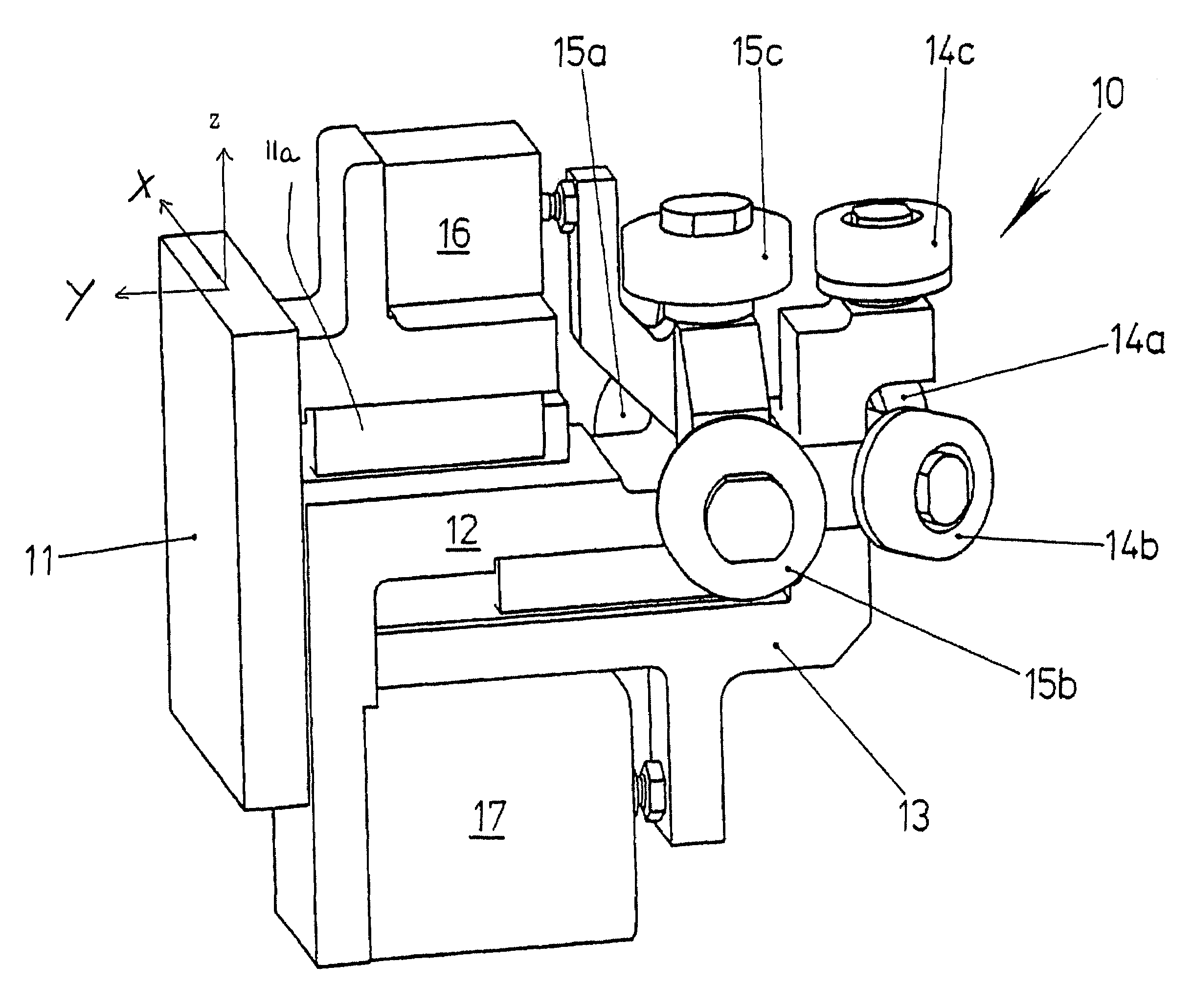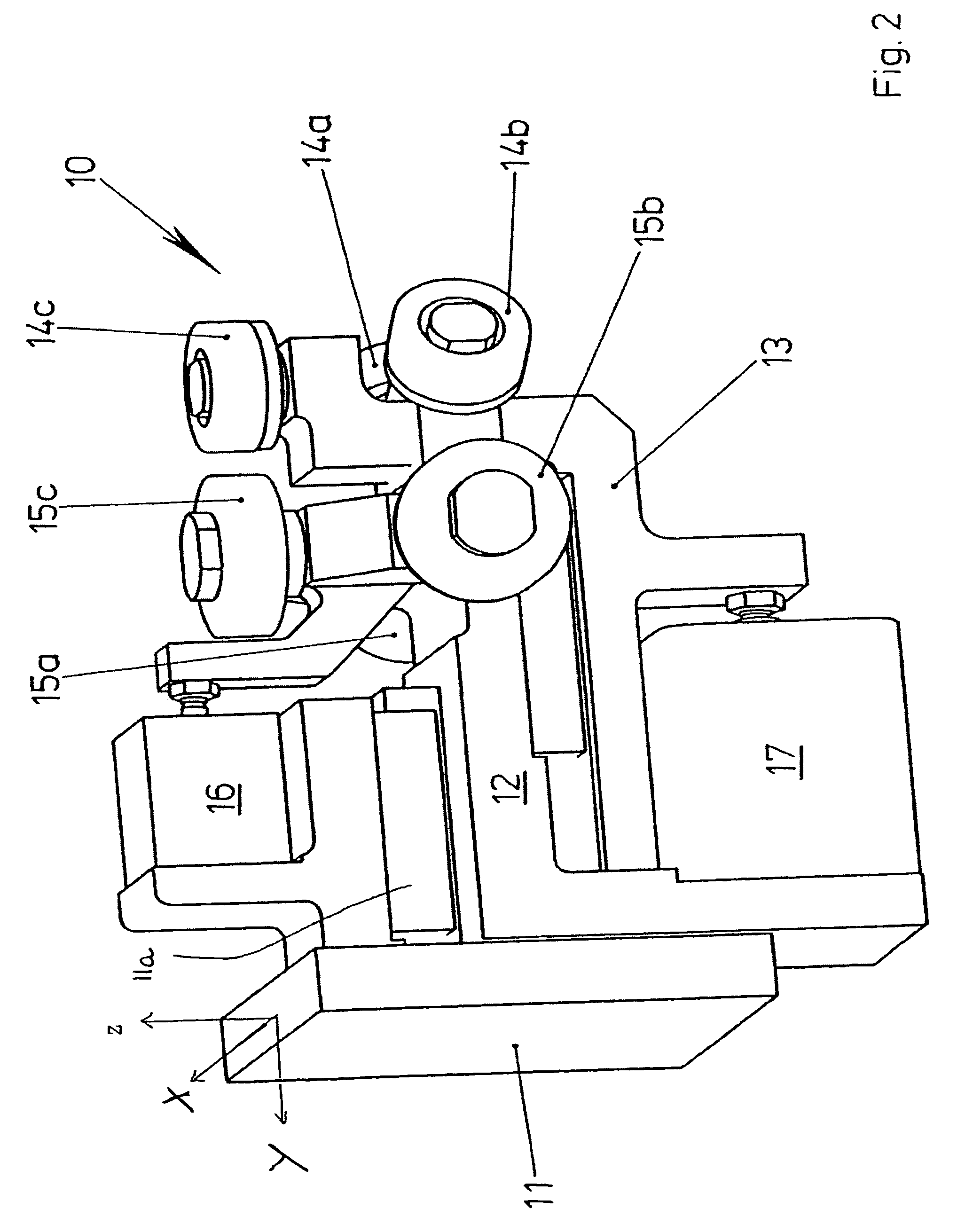Flanging device and flanging method with component protection
a technology of flanging device and flanging method, which is applied in the direction of metal working apparatus, manufacturing tools, transportation and packaging, etc., can solve the problems of difficult use of hem in production facilities where different types of body are built, spoiling the aesthetic effect of vehicle body, etc., and achieves the effect of simple handling
- Summary
- Abstract
- Description
- Claims
- Application Information
AI Technical Summary
Benefits of technology
Problems solved by technology
Method used
Image
Examples
Embodiment Construction
[0038]FIG. 1 shows a protective strip 1 in a framework 2 in accordance with the present invention. As will be recognised, the protective strip 1 follows the course of a wheel section. Its inner side 1i, visible in the figure, exhibits a contour which copies the desired outer contour of the body on the wheel arch, as a negative. The outer contour is generally in no way smooth, but is often provided with different facets and vertical structures, in order to obtain a particular aesthetic effect and / or a smooth transition to the adjacent body portions. On no account should this contouring be breached.
[0039]The framework 2 comprises a number of markers in the form of positioning pins 4 which engage with corresponding holes in the body, whereby the protective strip 1 is definitively fixed with respect to the body. Mechanical clamps 5 hold the framework 2 and therefore the protective strip 1 clamped on the body.
[0040]The outer side of the protective strip 1 is smooth and forms a rolling su...
PUM
| Property | Measurement | Unit |
|---|---|---|
| hemming angle | aaaaa | aaaaa |
| hemming angle | aaaaa | aaaaa |
| angle | aaaaa | aaaaa |
Abstract
Description
Claims
Application Information
 Login to View More
Login to View More - R&D
- Intellectual Property
- Life Sciences
- Materials
- Tech Scout
- Unparalleled Data Quality
- Higher Quality Content
- 60% Fewer Hallucinations
Browse by: Latest US Patents, China's latest patents, Technical Efficacy Thesaurus, Application Domain, Technology Topic, Popular Technical Reports.
© 2025 PatSnap. All rights reserved.Legal|Privacy policy|Modern Slavery Act Transparency Statement|Sitemap|About US| Contact US: help@patsnap.com



